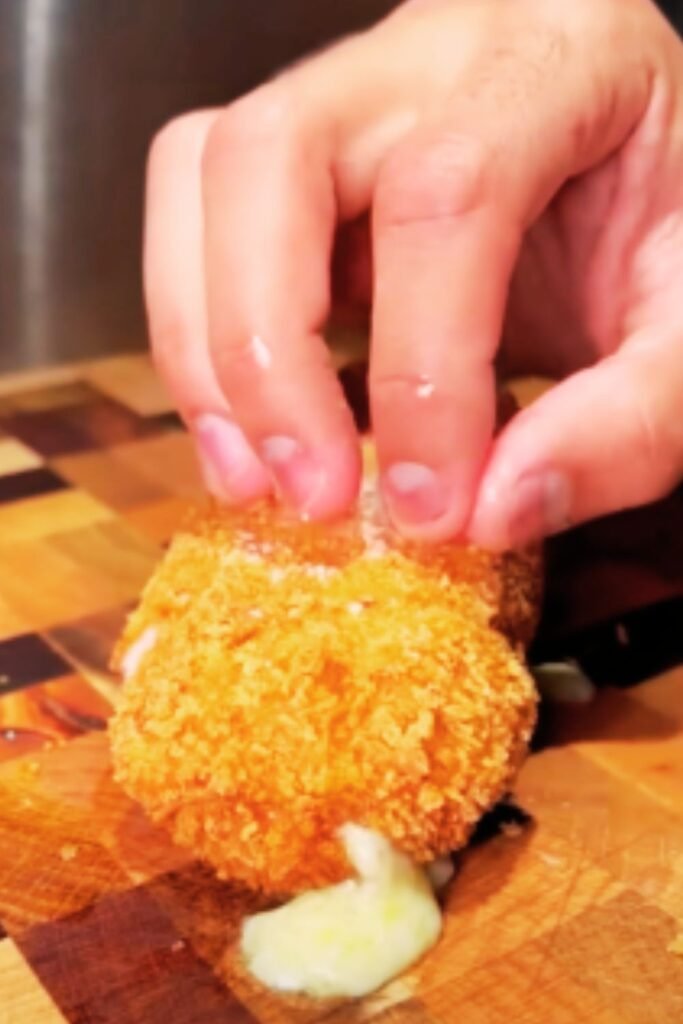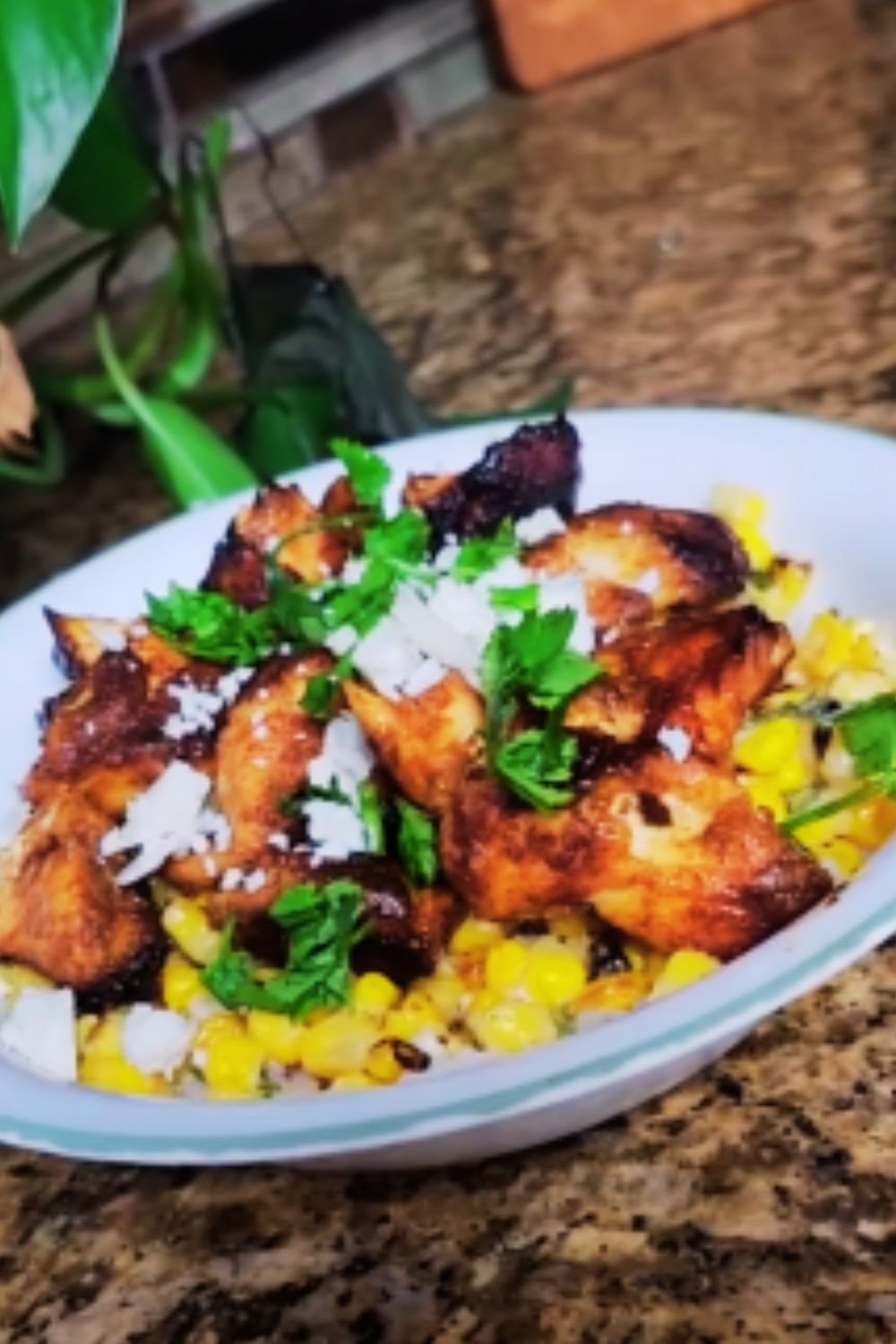Few dishes combine elegance and comfort quite like Chicken Cordon Bleu. With its golden, crispy exterior giving way to tender chicken wrapped around melty cheese and savory ham, this dish has earned its place as a dinner party staple and family favorite across the globe. Despite its fancy-sounding name and impressive presentation, I’ve discovered through years of cooking that this classic is actually quite approachable for home cooks of all skill levels.
As someone who has prepared this dish countless times—from casual weeknight dinners to special celebrations—I’m excited to share my comprehensive guide to creating the perfect Chicken Cordon Bleu. Whether you’re making it for the first time or looking to refine your technique, I’ll walk you through everything from selecting ingredients to serving suggestions, with plenty of tips and variations along the way.
The Origins of Chicken Cordon Bleu
Before diving into the cooking process, let’s take a moment to appreciate where this delicious dish comes from. Despite what many assume, Chicken Cordon Bleu isn’t actually a centuries-old French recipe. The term “cordon bleu” (meaning “blue ribbon”) has been associated with culinary excellence since the 16th century when Henry III of France established the L’Ordre du Saint-Esprit, an exclusive order whose members wore blue ribbons and reportedly enjoyed exceptional food.
However, the chicken dish we know today is more likely a mid-20th century American adaptation of similar European preparations like the Swiss schnitzel filled with cheese. The earliest known reference to the dish by name appears in U.S. cookbooks around the 1960s, suggesting this is a relatively modern classic that blends European techniques with American innovation.
Essential Ingredients for Perfect Chicken Cordon Bleu
The beauty of Chicken Cordon Bleu lies in its simplicity—just a few quality ingredients coming together to create something extraordinary. Here’s what you’ll need:
For the Chicken:
- 4 boneless, skinless chicken breasts (about 6-8 oz each)
- 8 thin slices of premium ham (I prefer Black Forest or honey ham)
- 8 slices of Swiss cheese (Gruyère or Emmental work beautifully)
- ½ cup all-purpose flour
- 2 large eggs, beaten
- 1½ cups panko breadcrumbs
- 1 teaspoon dried thyme
- 1 teaspoon garlic powder
- ½ teaspoon paprika
- ½ teaspoon salt
- ¼ teaspoon freshly ground black pepper
- 3 tablespoons olive oil
- 2 tablespoons unsalted butter
For the Dijon Cream Sauce (Optional but Recommended):
- 2 tablespoons unsalted butter
- 2 tablespoons all-purpose flour
- 1 cup chicken broth
- ¾ cup heavy cream
- 2 tablespoons Dijon mustard
- ½ teaspoon dried thyme
- Salt and freshly ground black pepper to taste
Equipment You’ll Need
Before starting, gather these kitchen tools:
- Meat mallet or rolling pin
- Plastic wrap
- Shallow dishes for breading station
- Toothpicks or cooking twine
- Large oven-safe skillet
- Instant-read thermometer
- Small saucepan (for sauce)
- Wire rack and baking sheet
Step-by-Step Preparation
Preparing the Chicken Breasts
The foundation of great Chicken Cordon Bleu starts with properly prepared chicken breasts. Follow these steps:
- Preheat your oven to 375°F (190°C).
- Place each chicken breast between two sheets of plastic wrap.
- Using a meat mallet or rolling pin, pound the chicken to an even ¼-inch thickness, working from the center outward.
- Season both sides of each chicken breast with salt and pepper.

Assembly Process
This is where the magic happens—transforming simple ingredients into an impressive creation:
- Lay the flattened chicken breasts on a clean work surface.
- Place 2 slices of ham on each chicken breast, leaving a small border around the edges.
- Top the ham with 2 slices of cheese, folding if necessary to fit within the border.
- Starting at the narrower end of each breast, tightly roll up the chicken, enclosing the ham and cheese.
- Secure each roll with toothpicks or cooking twine.
The Breading Station
Creating that perfect crispy exterior requires a proper breading process:
- Set up three shallow dishes:
- First dish: ½ cup flour seasoned with a pinch of salt and pepper
- Second dish: 2 beaten eggs with 1 tablespoon of water
- Third dish: Panko breadcrumbs mixed with thyme, garlic powder, paprika, salt, and pepper
- Roll each chicken bundle in the flour, shaking off excess.
- Dip into the egg mixture, allowing excess to drip off.
- Finally, coat thoroughly in the seasoned breadcrumbs, pressing gently to adhere.
- Place the breaded chicken rolls on a plate and refrigerate for 15-30 minutes if time allows (this helps the coating stick better during cooking).
Cooking Methods
I’ve experimented with multiple cooking techniques over the years, and I find the combination method yields the best results—crispy exterior, juicy interior, and perfectly melted cheese.
Method 1: Pan-Sear and Bake (Recommended)
This two-step process gives you the best of both worlds:
- Heat olive oil and butter in a large oven-safe skillet over medium-high heat.
- Add the breaded chicken rolls and cook until golden brown on all sides, about 2-3 minutes per side.
- Transfer the skillet to the preheated oven and bake for 15-20 minutes, until the internal temperature reaches 165°F (74°C).
- Let rest for 5 minutes before slicing and serving.
Method 2: Bake Only
For a lighter version with less hands-on time:
- Place the breaded chicken rolls on a wire rack over a baking sheet.
- Spray or brush lightly with oil.
- Bake at 375°F (190°C) for 25-30 minutes, until golden and cooked through (165°F internal temperature).
Method 3: Air Fryer Version
For quick cooking with a super crispy exterior:
- Preheat air fryer to 375°F (190°C).
- Spray the breaded chicken rolls with cooking oil spray.
- Cook for 15-18 minutes, turning halfway through, until golden and cooked through.
Making the Dijon Cream Sauce
While traditional Chicken Cordon Bleu is delicious on its own, a silky Dijon cream sauce elevates it to restaurant quality:
- In a small saucepan, melt butter over medium heat.
- Whisk in flour and cook for 1 minute, stirring constantly.
- Gradually whisk in chicken broth, stirring continuously to prevent lumps.
- Add heavy cream and bring to a gentle simmer until slightly thickened, about 3-4 minutes.
- Stir in Dijon mustard and thyme, then season with salt and pepper to taste.
- Keep warm over low heat until ready to serve.
Detailed Nutritional Information
For those monitoring their nutritional intake, here’s a comprehensive breakdown per serving (1 chicken roll with sauce):
| Nutrient | Amount | % Daily Value* |
|---|---|---|
| Calories | 585 | – |
| Total Fat | 35g | 45% |
| Saturated Fat | 18g | 90% |
| Trans Fat | 0g | – |
| Cholesterol | 235mg | 78% |
| Sodium | 1120mg | 49% |
| Total Carbohydrates | 18g | 7% |
| Dietary Fiber | 1g | 4% |
| Sugars | 2g | – |
| Protein | 48g | 96% |
| Vitamin D | 0.5mcg | 3% |
| Calcium | 380mg | 29% |
| Iron | 2.2mg | 12% |
| Potassium | 620mg | 13% |
*Based on a 2,000 calorie daily diet
Serving Suggestions
Chicken Cordon Bleu pairs beautifully with a variety of sides. Here are some of my favorite accompaniments:
Vegetable Options:
- Roasted asparagus with lemon zest
- Garlic green beans with toasted almonds
- Honey-glazed carrots
- Sautéed spinach with garlic
- Broccoli with hollandaise sauce
Starch Options:
- Buttered egg noodles with parsley
- Garlic mashed potatoes
- Wild rice pilaf
- Crusty French bread
- Parmesan risotto
Fresh Sides:
- Mixed green salad with balsamic vinaigrette
- Caesar salad with homemade croutons
- Cucumber and tomato salad with herbs

Common Mistakes to Avoid
Through years of preparing this dish, I’ve identified several pitfalls that can affect the final result:
- Uneven chicken thickness: Take time to pound the chicken evenly to ensure uniform cooking.
- Overstuffing: Using too much ham and cheese can cause the rolls to burst open during cooking.
- Loose rolling: Not rolling tightly enough allows the filling to leak out.
- Skipping the chilling step: Refrigerating the breaded rolls helps the coating adhere better.
- Temperature extremes: Cooking at too high a temperature can burn the exterior while leaving the interior undercooked.
- Cutting immediately: Not allowing the chicken to rest after cooking causes juices and cheese to run out.
Variations to Try
Once you’ve mastered the classic version, consider these delicious variations:
Different Cheese Options:
- Fontina for a buttery, melty texture
- Provolone for a slightly sharper flavor
- Mozzarella for a milder option
- Blue cheese for bold flavor enthusiasts
- Gouda for a smoky variation
Alternative Meats:
- Prosciutto instead of ham for a more delicate flavor
- Bacon for a smokier profile
- Salami for an Italian twist
- Turkey ham for a lighter option
- Smoked duck for a gourmet version
Coating Alternatives:
- Crushed corn flakes for extra crunch
- Herb-infused breadcrumbs
- Almond flour for a gluten-free option
- Parmesan-panko mix for added flavor
- Pretzel crumbs for a unique texture
Make-Ahead and Storage Tips
Chicken Cordon Bleu is perfect for meal prep and entertaining:
Make-Ahead Options:
- Prepare and bread the chicken rolls up to 24 hours in advance; store covered in the refrigerator.
- Freeze assembled but uncooked rolls for up to 3 months; thaw overnight in the refrigerator before cooking.
- The sauce can be made 2 days ahead and reheated gently on the stovetop.
Storage Guidelines:
- Refrigerate leftovers in an airtight container for up to 3 days.
- Freeze cooked Chicken Cordon Bleu for up to 2 months.
- Reheat in a 325°F (165°C) oven until warmed through, about 15-20 minutes from refrigerated or 25-30 minutes from frozen.
Special Dietary Adaptations
Gluten-Free Version:
- Replace all-purpose flour with gluten-free flour blend
- Use gluten-free panko or crushed rice cereal for coating
- Verify ham is gluten-free (some deli meats contain gluten)
Lower-Calorie Option:
- Use reduced-fat cheese
- Skip the pan-searing and opt for baking only
- Make a lighter sauce using milk instead of heavy cream
- Use lean ham or turkey ham
Dairy-Free Adaptation:
- Substitute dairy-free cheese alternative
- Use unsweetened plant-based milk in the sauce
- Replace butter with olive oil or dairy-free butter substitute

Time-Saving Tips for Busy Cooks
When time is limited but you’re craving this classic:
- Buy pre-pounded chicken: Many stores sell “thin-sliced” chicken breasts.
- Use toothpicks instead of twine: Much faster than tying.
- Skip the chilling step: If truly pressed for time, this step can be omitted.
- Prep in batches: Make several at once and freeze the extras for future meals.
- Use the air fryer: The fastest cooking method that still yields great results.
Chicken Cordon Blew vs. Traditional Schnitzel: A Comparison
Many people confuse these related dishes, so let’s clarify the differences:
| Feature | Chicken Cordon Bleu | Traditional Schnitzel |
|---|---|---|
| Base Protein | Chicken breast | Veal, pork, or chicken |
| Preparation | Stuffed and rolled | Pounded thin, not stuffed |
| Fillings | Ham and cheese | None |
| Coating | Flour, egg, breadcrumbs | Flour, egg, breadcrumbs |
| Origin | Swiss-American fusion | Austrian/German |
| Cooking Method | Pan-seared then baked | Typically just pan-fried |
| Traditional Sauce | Dijon cream sauce | Often served with lemon |
| Typical Sides | Potatoes or pasta | Potatoes or red cabbage |
Troubleshooting Guide
Even experienced cooks sometimes encounter issues. Here’s how to address common problems:
Problem: Cheese leaking out during cooking
Solution: Ensure chicken is rolled tightly, secure well with toothpicks, and consider chilling before cooking.
Problem: Breadcrumb coating falls off
Solution: Pat chicken completely dry before breading, chill after breading, and ensure oil is hot before adding chicken.
Problem: Chicken is cooked outside but raw inside
Solution: Pound to even thickness, lower oven temperature, and cook longer.
Problem: Bland flavor despite following recipe
Solution: Season the chicken itself before adding fillings, use higher quality ham and cheese, and don’t skip seasoning the breadcrumbs.
Problem: Sauce is lumpy
Solution: Whisk continuously when adding liquid to roux, and strain sauce if lumps persist.
Questions & Answers
Q: Can I make Chicken Cordon Bleu without breading? Absolutely! For a low-carb version, simply season the chicken rolls and cook them without the flour, egg, and breadcrumb coating. To get a nice golden exterior, brush with a little butter before baking.
Q: What’s the best cheese to use if I don’t like Swiss? If Swiss cheese isn’t your preference, provolone makes an excellent substitute with its mild flavor and excellent melting qualities. Mozzarella is another good option for a milder taste, while fontina offers a rich, buttery flavor that works beautifully in this dish.
Q: How do I prevent the toothpicks from burning in the oven? To prevent toothpicks from burning, soak them in water for about 30 minutes before using them to secure your chicken rolls. Alternatively, you can use kitchen twine, which handles the heat better.
Q: Can this dish be prepared in a slow cooker? While possible, I don’t recommend it. Slow cookers create a moist environment that prevents the breading from crisping up. The chicken would be tender, but you’d lose the signature crispy exterior that makes Chicken Cordon Bleu special.
Q: Is there a way to tell if the chicken is done without cutting it open? An instant-read thermometer is your best friend here! Insert it into the thickest part of the chicken roll (avoiding the cheese) – it should read 165°F (74°C) when the chicken is safely cooked.
Q: Can I use chicken thighs instead of breasts? Yes, boneless, skinless chicken thighs can work, but they’ll need to be pounded very thin and may be trickier to roll. The flavor will be richer, and the meat more forgiving if slightly overcooked.
Q: What’s a good non-alcoholic pairing for this dish? Sparkling water with a splash of cranberry juice and a lemon twist complements the richness of the dish beautifully. A classic lemonade or iced tea with mint also works well to cut through the richness.
Q: How can I make this healthier without sacrificing flavor? Use reduced-fat cheese, lean ham, and bake instead of pan-searing. For the sauce, substitute half-and-half for heavy cream and reduce the butter. These small changes significantly reduce calories while maintaining the dish’s essence.
Final Tips for Perfection
After preparing this dish countless times, I’ve discovered a few professional tips that take it from good to great:
- Let ingredients come to room temperature before starting for more even cooking.
- For the crispiest exterior, make sure your oil is hot before adding the chicken (a breadcrumb should sizzle immediately when dropped in).
- Position your toothpicks horizontally rather than vertically to make turning the rolls easier.
- For a more golden crust, mix a tablespoon of melted butter into your egg mixture.
- Always slice the chicken against the grain for the most tender bites.
- For a beautiful presentation, slice the chicken on a slight diagonal and fan the pieces slightly on the plate.
Chicken Cordon Bleu may have originated as a simplified version of more complex European dishes, but it’s stood the test of time because it strikes that perfect balance between impressive presentation and comforting flavors. With these detailed instructions and tips, you’re well-equipped to create this classic dish with confidence, whether for a quiet family dinner or a special celebration.
Happy cooking, and enjoy making this timeless classic your own!


